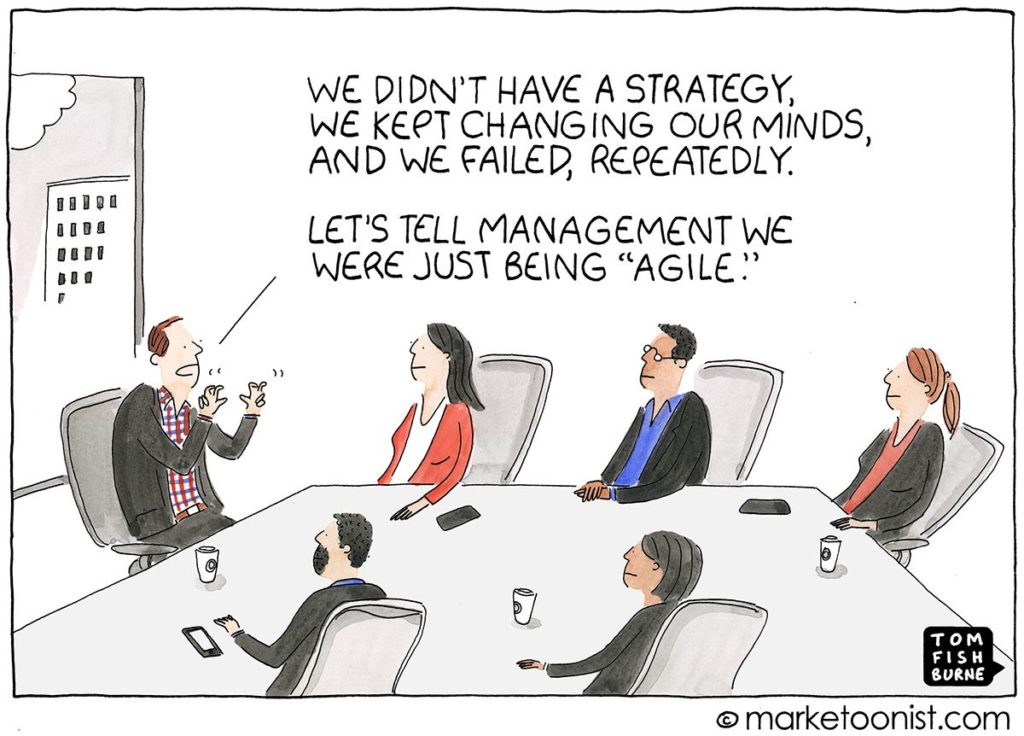In today’s fast-paced business environment, Project Managers (PMs) and System Project Managers (SPMs) are increasingly adopting Agile methodologies to deliver projects efficiently while maintaining high standards of quality. However, what if you could enhance your Agile approach even further? By integrating Six Sigma Green Belt and Black Belt strategies, you can significantly elevate your project outcomes. But before diving into how these certifications can benefit your Agile projects, it’s important to consider the cost and return on investment (ROI) of obtaining these certifications.
Six Sigma Green Belt certification cost varies depending on the provider, ranging from $300 to $2,000. While this may seem like a significant investment, the long-term benefits in terms of reduced defects, increased efficiency, and overall project success often far outweigh the initial expense.
In this article, we’ll explore how Six Sigma Green Belt and Black Belt strategies can be applied in Agile environments, offering practical examples of how these methodologies work together to achieve business and project objectives.
- If you would like to have an Agile certification, you can check out Master of Project Academy’s Agile courses.
- To get the Lean Six Sigma Green Belt Certification, check out Master of Project Academy’s Lean Six Sigma Green Belt training.
The Power of Six Sigma in Agile Project Management
Agile Project Management is all about flexibility, continuous improvement, and delivering value quickly. However, balancing speed with quality is a common challenge. This is where Six Sigma Green Belt and Black Belt strategies come into play.

Six Sigma Green Belt certification equips project managers with tools and techniques to reduce variability and improve processes. Black Belt certification, on the other hand, takes this a step further, empowering managers to lead complex projects and drive strategic improvements across the organization.
Differences Between Six Sigma Green Belt and Black Belt Certifications
The distinctions between Six Sigma Green Belt and Black Belt certifications largely pertain to the depth of knowledge, scope of responsibilities, and leadership roles in process improvement initiatives. Below is a detailed comparison:
1. Training and Knowledge Level
- Green Belt: Green Belt training typically spans 35 to 70 hours, focusing on essential Six Sigma tools and techniques, particularly the DMAIC (Define, Measure, Analyze, Improve, Control) framework. Green Belts are prepared to gather and analyze data, often participating part-time in projects under the supervision of a Black Belt.
- Black Belt: Black Belt training is more comprehensive, usually exceeding 140 hours, covering advanced statistical techniques and leadership skills. Black Belts have a thorough understanding of Six Sigma methodologies and are trained to manage complex projects and lead teams effectively.
2. Roles and Responsibilities
- Green Belt: Individuals with Green Belt certification typically manage smaller projects or assist in larger initiatives by collecting data, analyzing results, and implementing improvements. They usually work part-time on Six Sigma projects and report to Black Belts.
- Black Belt: Black Belts assume leadership roles, guiding project teams and overseeing the entire project lifecycle. They are responsible for defining problems, creating data collection plans, analyzing root causes, and implementing solutions. Black Belts generally work full-time on Six Sigma projects and serve as a liaison between project teams and upper management.
3. Project Impact and Financial Accountability
- Green Belt: Projects led by Green Belts typically generate savings ranging from $50,000 to $100,000 annually. They concentrate on specific areas of process improvement and contribute to overall project success but usually do not have the same financial impact as those led by Black Belts.
- Black Belt: Projects managed by Black Belts can achieve substantial financial savings, often exceeding $250,000 per initiative. Their expertise and leadership enable them to drive significant initiatives that align with organizational objectives and yield considerable financial benefits.
4. Career Advancement and Requirements
- Green Belt: Generally, candidates for Green Belt certification are expected to have 1 to 3 years of relevant work experience. This certification serves as a foundational step for those aspiring to advance to Black Belt status.
- Black Belt: Candidates for Black Belt certification typically require 3 to 5 years of experience, along with prior Green Belt certification. Black Belts are expected to mentor Green Belts and lead enterprise-level projects, making their role more strategic.
Both Green Belts and Black Belts are vital to Six Sigma initiatives, with Green Belts focusing on specific projects and Black Belts providing strategic leadership. The decision to pursue a Green Belt or Black Belt certification depends on individual career aspirations and the level of responsibility one wishes to take on in process improvement efforts.
Six Sigma + Agile Project Management = Project Management Gold Champion
Now let’s delve into how these certifications can be leveraged in Agile Project Management and why the certification cost is a worthwhile investment.
1. Defining Clear Project Objectives Using DMAIC
Six Sigma Green Belt Approach: One of the core strategies in Six Sigma is the DMAIC methodology (Define, Measure, Analyze, Improve, Control). This structured approach ensures that project goals are clear and measurable from the beginning.
Practical Example in Agile: Imagine you’re leading a software development project using Agile. The project’s objective is to reduce the number of bugs reported by users after each release.
- Define: Collaborate with stakeholders to clearly define the problem: “High number of post-release bugs.”
- Measure: Use Agile metrics like defect density to measure the current state.
- Analyze: Apply root cause analysis to identify why bugs are slipping through—perhaps due to inadequate testing or unclear user stories.
- Improve: Implement improvements, such as integrating automated testing within sprints or refining the definition of done (DoD).
- Control: Use control charts to monitor defect levels over time and ensure that improvements are sustained.
By applying Green Belt strategies, you can align Agile sprints with broader business objectives, ensuring that each iteration contributes to achieving high-level goals.
2. Enhancing Process Efficiency Through Lean Principles
Six Sigma Green Belt and Black Belt Approaches: Six Sigma often integrates Lean principles, which focus on eliminating waste and improving efficiency. While Green Belts learn to streamline processes, Black Belts take on the role of identifying and implementing broader process improvements across multiple projects or departments.
Practical Example in Agile: Consider a marketing team using Agile to manage their campaigns. They’ve noticed delays in getting content approved, which affects their ability to deliver campaigns on time.
- Green Belt Strategy: The Green Belt-certified PM maps out the content approval process and identifies bottlenecks—such as multiple rounds of unnecessary reviews.
- Black Belt Strategy: A Black Belt then steps in to lead a cross-functional team to standardize the approval process across all marketing projects, reducing redundancy and speeding up delivery times.
Applying Lean Six Sigma principles in this way helps Agile teams streamline workflows, ensuring that every task adds value and contributes to faster project completion.
3. Improving Quality with Root Cause Analysis
Six Sigma Green Belt and Black Belt Approaches: Quality is a core focus of Six Sigma. Green Belts are trained to use tools like Fishbone Diagrams and 5 Whys to identify the root causes of problems, while Black Belts lead teams in implementing and sustaining quality improvements across the organization.
Practical Example in Agile: A manufacturing company using Agile for product development finds that defects are frequently discovered during the final testing phase, causing delays.
- Green Belt Strategy: The Green Belt-certified PM conducts a Fishbone Diagram session with the team to uncover root causes, such as poor communication of requirements or inconsistent testing procedures.
- Black Belt Strategy: A Black Belt introduces a more rigorous, standardized testing process across all product teams, ensuring that similar defects are caught earlier in the development cycle.
This example shows how Six Sigma tools can be integrated into Agile workflows to enhance quality at every stage, ultimately leading to better products and satisfied customers.
4. Better Risk Management Through Proactive Identification
Six Sigma Green Belt and Black Belt Approaches: Six Sigma provides robust tools for identifying and mitigating risks, which is crucial in Agile environments where rapid iterations can sometimes lead to unforeseen issues.
Practical Example in Agile: An IT services company working on an Agile project for a client faces a risk of missing a tight deadline due to unexpected technical challenges.
- Green Belt Strategy: The Green Belt-certified PM uses Failure Mode and Effects Analysis (FMEA) to assess the potential risks associated with the current iteration, identifying the most critical areas that could cause delays.
- Black Belt Strategy: A Black Belt leads the team in developing contingency plans and strategies to mitigate these risks, such as allocating additional resources or adjusting the sprint goals to focus on high-priority tasks.
Integrating Six Sigma’s proactive risk management strategies enables Agile teams to navigate uncertainties more effectively, ensuring project delivery on time and within budget.
- Learn more about Amazon’s Fail Fast, Fail Forward Culture
5. Financial Justification and ROI with Cost-Benefit Analysis
Six Sigma Green Belt and Black Belt Approaches: A significant advantage of Six Sigma is its emphasis on financial impact. Green Belts are trained to perform cost-benefit analyses, while Black Belts focus on aligning projects with strategic business goals to maximize ROI.
Practical Example in Agile: A healthcare organization is considering investing in a new Agile project management tool but needs to justify the expense.
- Green Belt Strategy: The Green Belt-certified PM conducts a cost-benefit analysis, comparing the tool’s cost against the expected improvements in team efficiency and project delivery times.
- Black Belt Strategy: A Black Belt expands this analysis to include long-term strategic benefits, such as the tool’s potential to integrate with other systems and improve overall patient care outcomes, making a compelling case for the investment.
This example highlights how Six Sigma’s financial analysis techniques can help Agile teams make informed decisions, ensuring that investments are aligned with the organization’s long-term goals.
- Master decision-making using the OODA Loop
6. Building and Leading High-Performance Teams
Six Sigma Green Belt and Black Belt Approaches: Six Sigma training emphasizes teamwork and leadership. Green Belts are equipped to mentor and guide teams, while Black Belts take on more significant leadership roles, driving organizational change and continuous improvement.
Practical Example in Agile: A software development company is struggling with team collaboration issues, leading to inconsistent sprint results.
- Green Belt Strategy: The Green Belt-certified PM introduces regular Kaizen (continuous improvement) sessions, where the team reflects on the sprint and suggests improvements. This encourages collaboration and a shared commitment to quality.
- Black Belt Strategy: A Black Belt works with senior management to implement an organization-wide initiative promoting Agile and Six Sigma principles, fostering a culture of continuous improvement and collaboration across all teams.
By leveraging Six Sigma leadership strategies, Agile teams can become more cohesive, focused, and driven to achieve their goals.
- Our exclusive “Sandbox,” membership provides project management principles and techniques with real-life examples
Conclusion: The Synergy of Agile and Six Sigma
Integrating Six Sigma Green Belt and Black Belt strategies into Agile Project Management creates a powerful synergy that enhances the strengths of both methodologies. Agile’s flexibility and focus on rapid delivery align perfectly with Six Sigma’s data-driven approach to quality and efficiency.

For Project Managers and System Project Managers, investing in Six Sigma certification—whether Green Belt or Black Belt—can be a game-changer. While the Six Sigma Green Belt certification cost varies, ranging from $300 to $2,000, the ROI in terms of improved project outcomes, higher quality deliverables, and enhanced team performance makes it a worthwhile investment.
By combining Agile with Six Sigma, you’re not just managing projects—you’re leading them to success. And that’s the kind of result every project manager aims for.
